It was another low-volume day of trading on the , with fewer than 1 million contracts traded. The positive, of course, is that the index remains above the 10-day exponential moving average, and as long as that level holds, it’s difficult to become too negative on the market. Each time the futures have tested that moving average, they have managed to bounce off it.
Today is OPEX, so the pinning effects at 6,300 will end. This means the index will be able to move much more freely, either upward or downward. Most of the gamma should expire at the opening, with the remainder expiring at the close.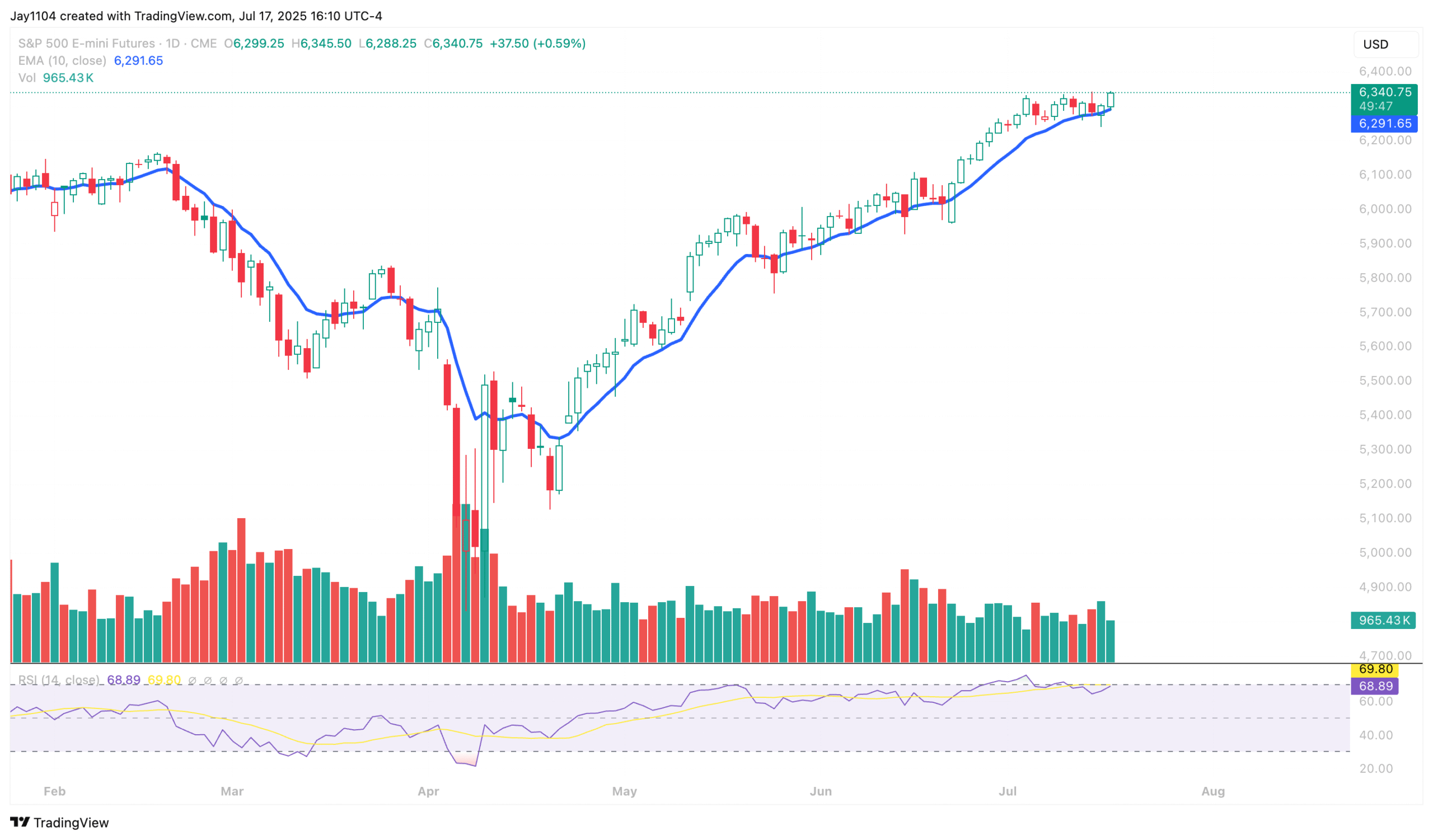
The only issue with this market—aside from being massively overvalued and facing several other problems—is that we’re now entering earnings season with realized volatility levels extremely low. It won’t take much to push realized volatility higher. Essentially, the can’t move more than 50 basis points per day in either direction without lifting 10-day realized volatility, which is exactly why it edged fractionally higher yesterday.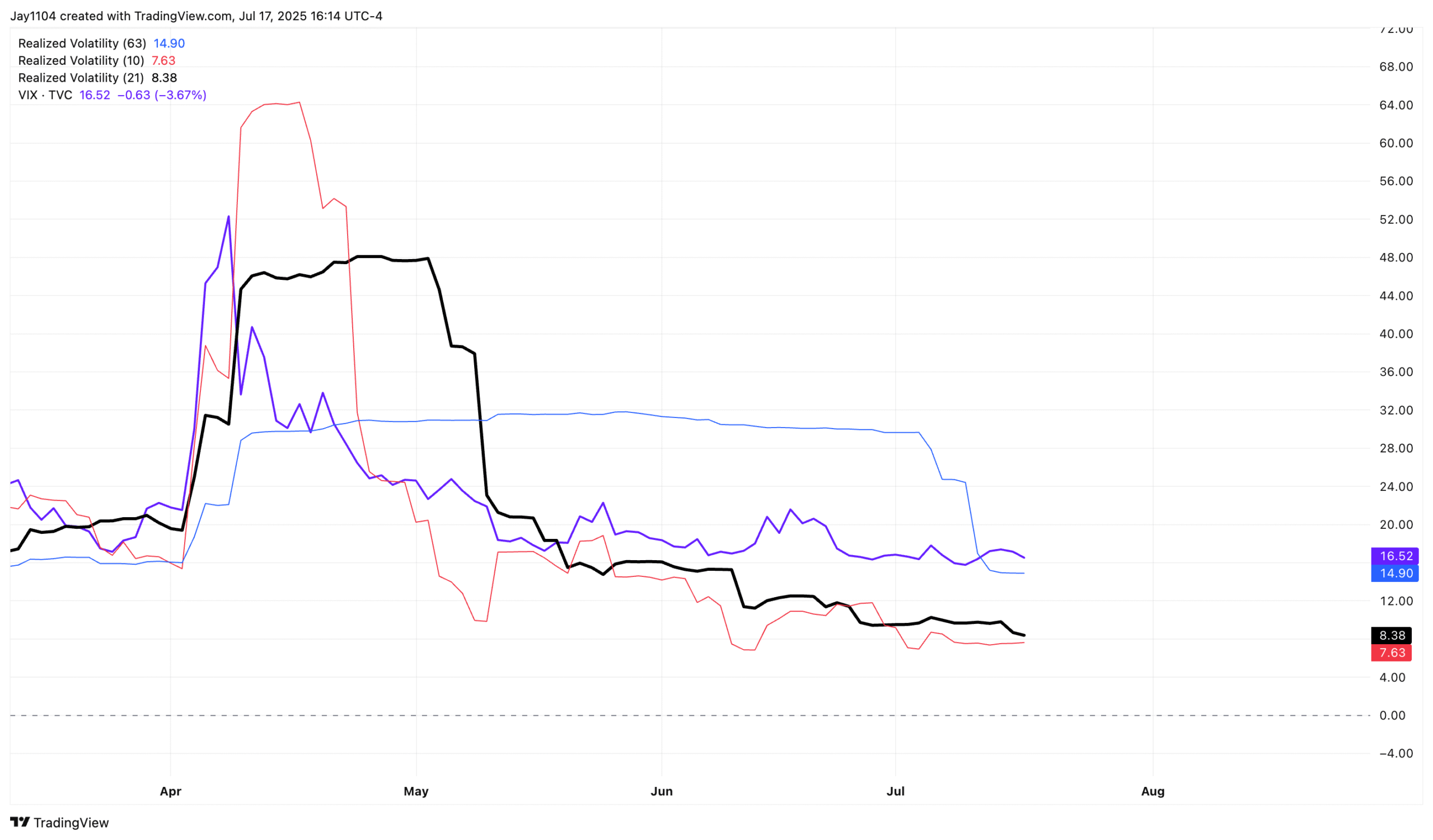
The other issue at hand is that implied correlations have either bottomed or are very close to bottoming. While nothing in life is guaranteed, when the 1-month implied correlation bottomed in July 2023 and 2024, it marked a turning point in the stock market. This signal is particularly strong when the bottom coincides with earnings season, primarily due to the unwind of implied volatility dispersion.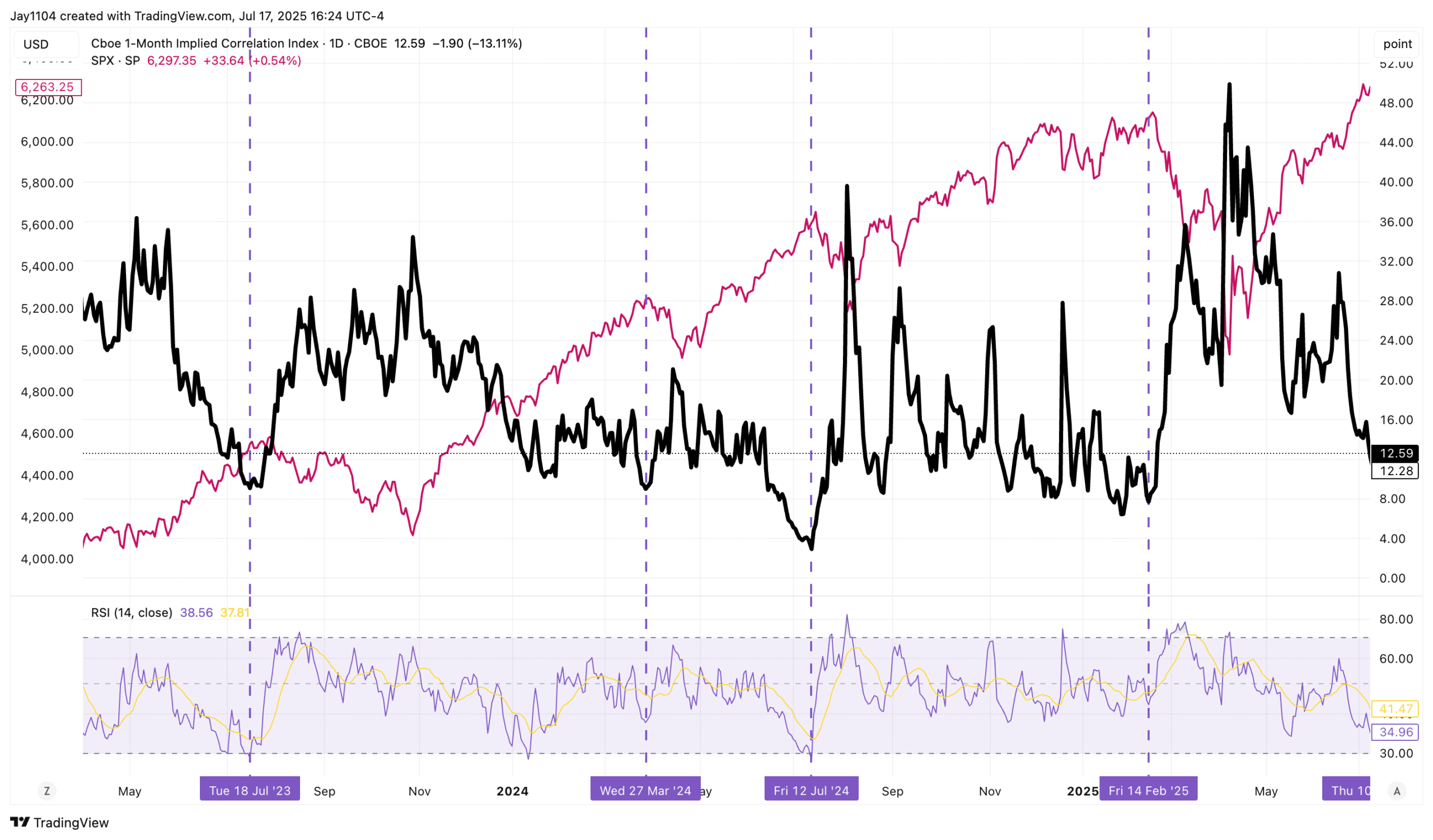
That’s because implied volatility for individual stocks in the S&P 500 rises heading into earnings, then crashes afterward. So, when implied volatility for the stocks in the index is rising while volatility for the S&P 500 is falling, it pushes implied correlations lower.
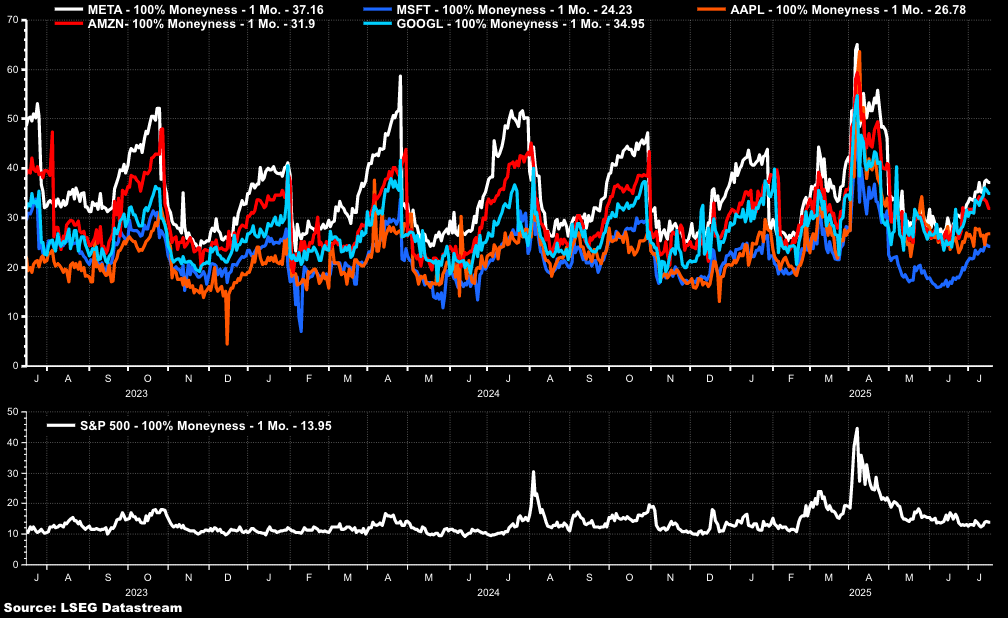
Once earnings season has passed, the trade is essentially over because the 1-month implied volatility of individual stocks begins to trade more closely with the 1-month implied volatility of the index again. This pushes the 1-month implied correlation higher, moving it from an inverse relationship (near -1) back toward a positive relationship (near +1). The initial trade is accomplished by buying implied volatility on individual stocks and shorting implied volatility on the index. Therefore, when the trade is unwound, the trader sells the stock implied volatility and buys back the index implied volatility.
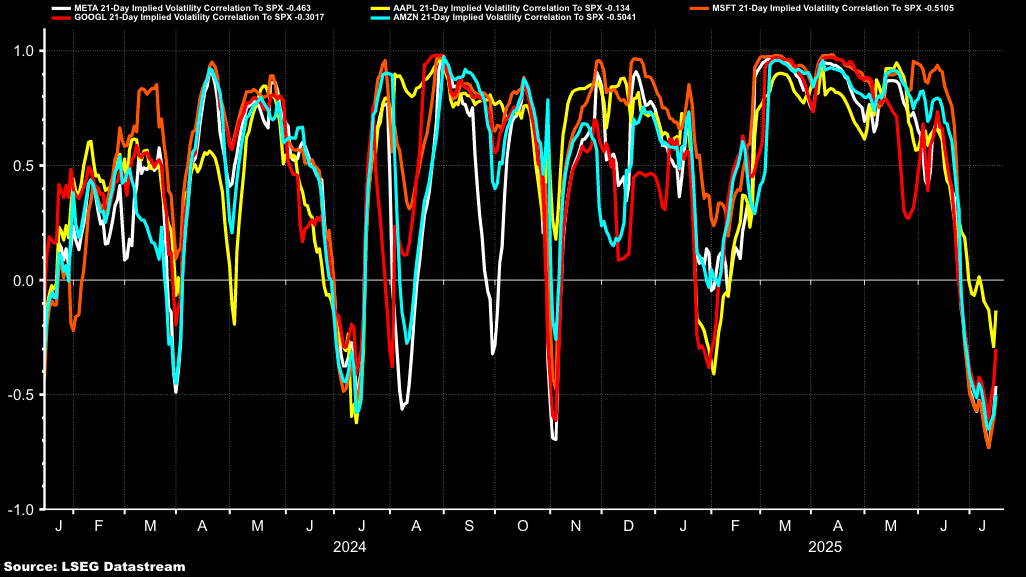
In the meantime, inflation expectations continue to rise, with the 5-year swap breaking out of a nearly 2-year-long base and rising to 2.64%. That’s the highest the swap has traded since the spring of 2023. From a technical analysis standpoint, you could say the swap has broken out of an inverted head-and-shoulders pattern.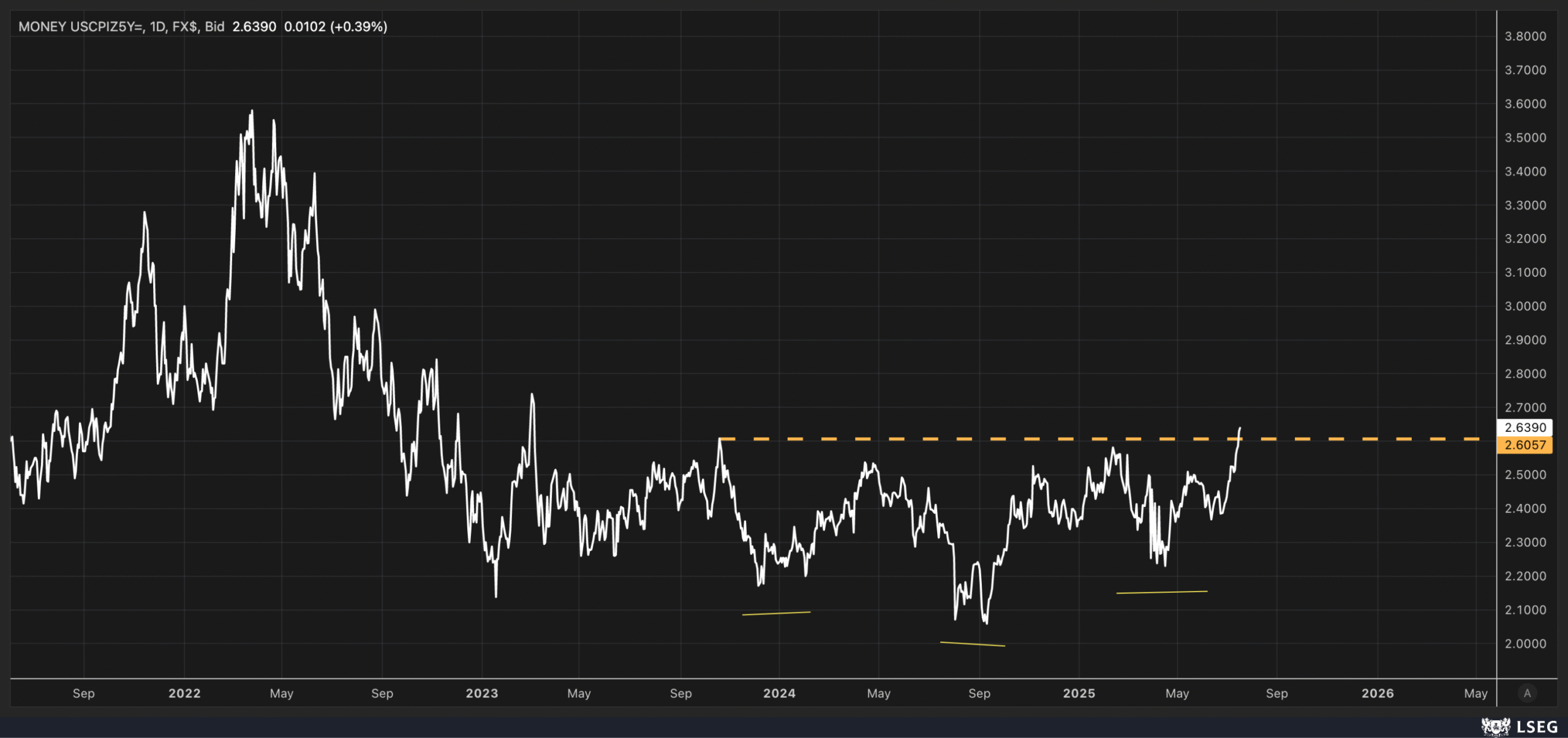
I hate to be the bearer of bad news, but generally speaking, when the 5-year swap trades higher, the tends to rise along with it.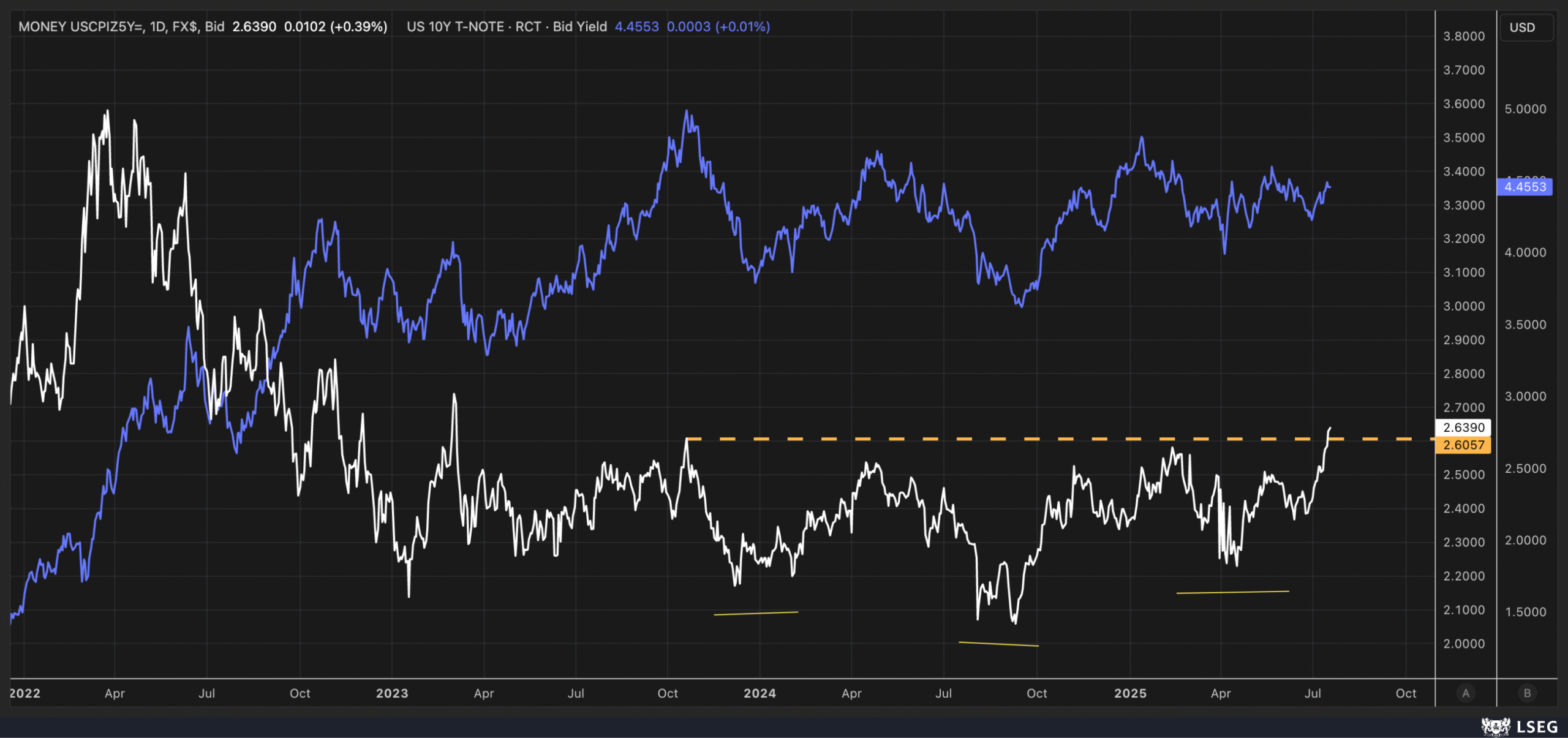
Anyway, that’s all the free information for now.
